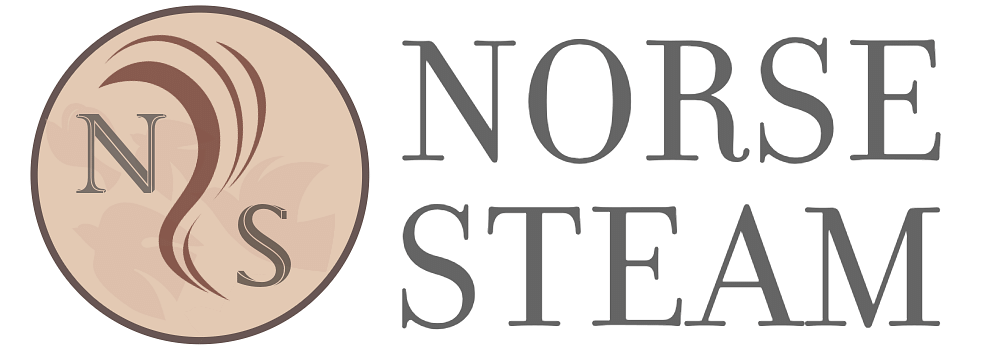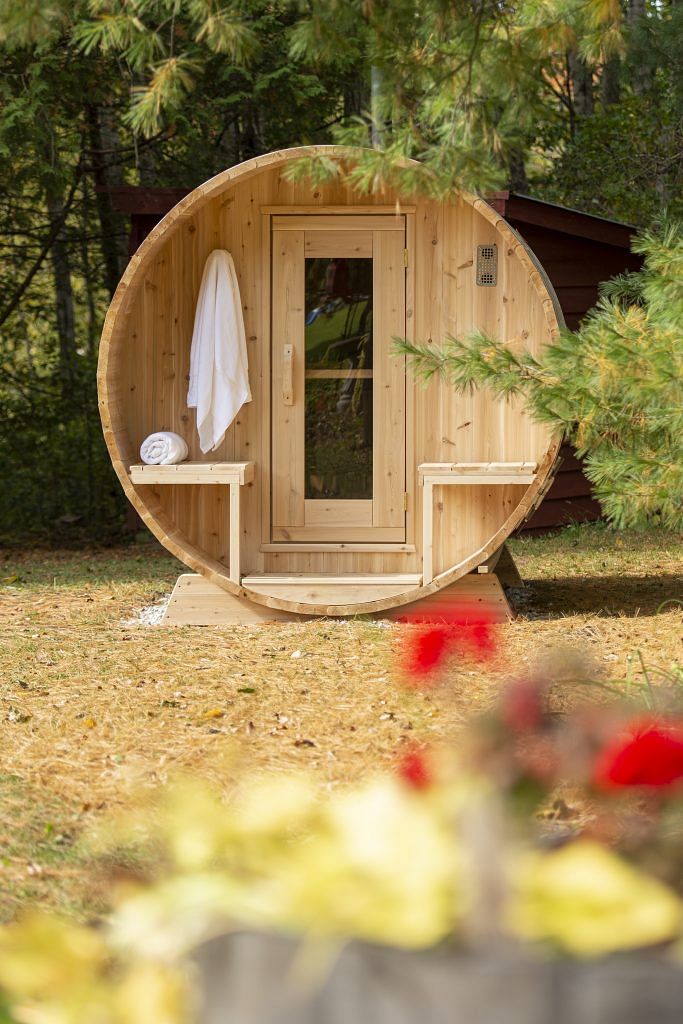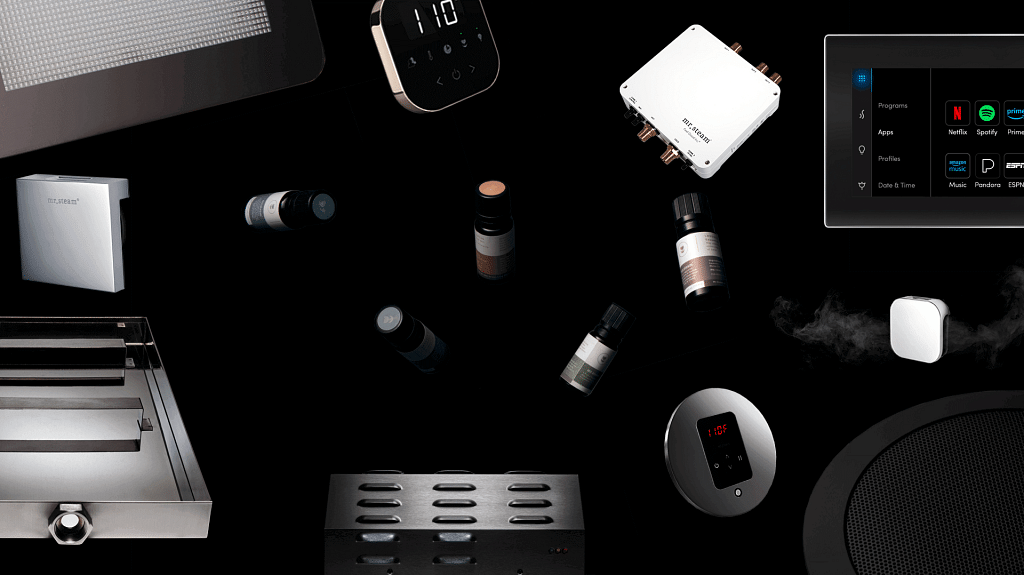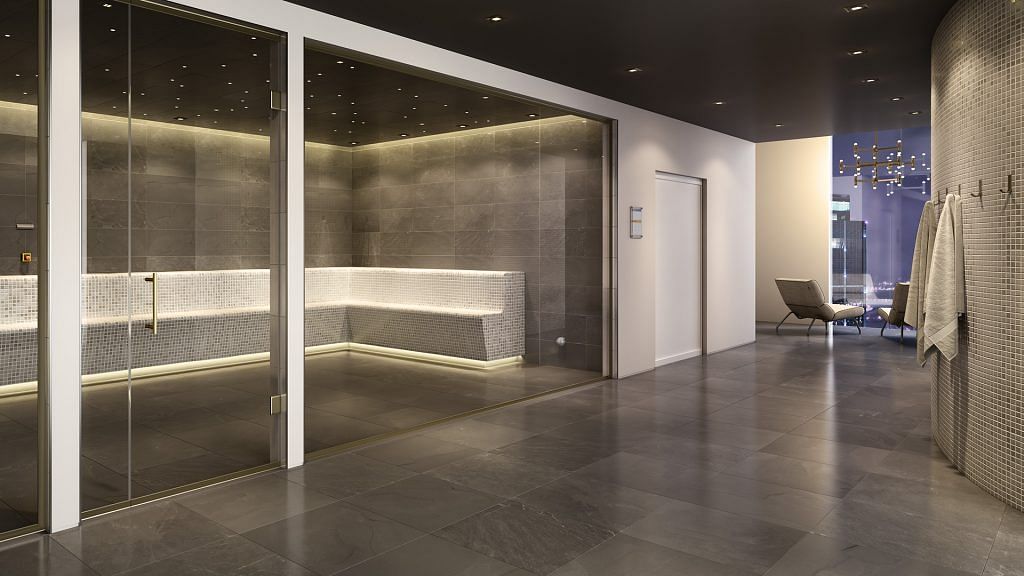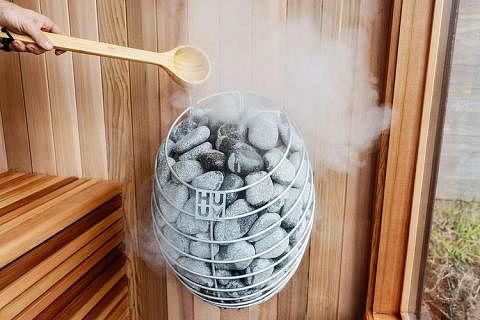Sauna
What is the Best Sauna Temperature? Health, Dry and Wet
Sauna temperature guide: Discover the best heat for relaxation, detox & muscle relief. Safe sweating made easy!
The Purpose of Using the Sauna Matters
The ideal temperature for your sauna session depends largely on what you hope to achieve. Here’s why:
- Relaxation and Stress Relief: If unwinding and de-stressing are your primary goals, a gentler temperature range of 150-170°F (65-75°C) in a traditional sauna might be perfect. This allows for longer sessions (15-20 minutes) where you can comfortably relax and let your worries melt away. Consider this temperature range ideal for social gatherings in the sauna as well. It fosters conversation and allows everyone to enjoy the warmth without feeling overwhelmed.
- Muscle Recovery and Pain Relief: For those seeking muscle relaxation and pain relief after exercise, a slightly higher temperature range of 170-195°F (75-90°C) can be beneficial. This increased heat can improve circulation, promote deeper muscle relaxation, and potentially ease aches and stiffness. Be mindful of others in a social sauna setting at this temperature. Shorter sessions (10-15 minutes) might be more considerate, allowing others to enjoy the heat without excessive discomfort.
- Overall Health Benefits: Studies suggest that regular sauna use at moderate to high temperatures (155-195°F / 70-90°C) may offer various health benefits. These include improved cardiovascular health, a boosted immune system, and potentially even reduced risk of certain chronic diseases.
Remember, these are general recommendations. It’s always best to listen to your body and adjust the temperature or session length to what feels comfortable and safe for you. Be courteous of others in a social sauna setting and communicate openly if you need to adjust the temperature for your personal needs.
We Are Not All the Same
Sauna enjoyment is a personal experience! While the previous section discussed general temperature ranges for different goals, it’s crucial to remember that the ideal temperature for you will vary depending on several factors:
- Individual Tolerance: Our bodies handle heat differently. Some people find intense heat invigorating, while others prefer a milder experience. Start low and gradually increase the temperature as you get accustomed to saunas.
- Body Composition: People with more body fat tend to tolerate higher temperatures better, as fat tissue insulates more effectively.
- Age: As we age, our core temperature regulation becomes less efficient. Lower temperatures (150-170°F / 65-75°C) are generally recommended for seniors or those new to saunas.
- What You’ve Eaten: A large meal can make you feel sluggish in the heat. It’s best to have a light, easily digestible meal before entering the sauna.
- Hydration: Dehydration can worsen heat stress. Drink plenty of water before, during, and after your sauna session.
- Alcohol Consumption: Alcohol can impair your judgment and increase the risk of overheating. Avoid alcohol before or during sauna use.
- Medical Conditions: Certain medical conditions can be exacerbated by heat. Consult your doctor before using a sauna if you have any concerns.
Remember, the key is to listen to your body. If you feel dizzy, nauseous, or uncomfortable at any point, exit the sauna and cool down. Don’t be afraid to adjust the temperature or shorten your session for a safe and enjoyable sauna experience.
Not All Saunas Are the Same Too
So far, we’ve explored how the purpose of your sauna session and individual factors influence ideal temperatures. But did you know that the type of sauna itself plays a significant role? Let’s delve into the temperature ranges for different sauna varieties:
Best Sauna Temperature for Steam Sauna
Steam saunas, unlike traditional Finnish saunas, boast a much more humid environment. The recommended temperature range for steam saunas is typically between 110°F and 120°F (43°C – 49°C). This lower temperature creates a gentler heat experience despite the high humidity.
Best Sauna Temperature for Dry Sauna
Now, let’s switch gears and explore the temperature range for dry saunas, the kind most commonly associated with the Finnish sauna tradition.
As discussed earlier, dry saunas lack the moisture content of steam saunas. This means the air feels hotter at the same temperature. Here’s a breakdown of typical temperature ranges for dry saunas:
- Gentle Heat (140-155°F / 60-68°C): This range is ideal for beginners, those new to saunas, or anyone seeking a more relaxing experience. It allows for longer sessions (15-20 minutes) without feeling overwhelmed by the heat.
- Moderate Heat (155-175°F / 68-79°C): This is a popular range for many users. It provides a good balance between relaxation and potential health benefits. Sessions in this range typically last 10-15 minutes.
- Higher Heat (175-195°F / 79-90°C): This range is for experienced sauna users who enjoy a more intense heat experience. The increased heat can promote deeper muscle relaxation and potentially offer greater cardiovascular benefits. Be mindful that sessions at this temperature should be shorter (10-15 minutes) to avoid overheating.
Infrared Sauna Temperature
Infrared saunas operate on a completely different principle than traditional dry or steam saunas. Instead of heating the air itself, infrared saunas utilize infrared lamps that directly emit radiant heat, warming your body from the inside out. This unique heating method allows for lower air temperatures while still achieving a comfortable and effective sweat.
Here’s a breakdown of the typical temperature range for infrared saunas:
- Recommended Range (120-140°F / 49-60°C): This range is ideal for most users. It provides a comfortable and effective sweat session without feeling overly hot.
- Lower Temperatures (100-120°F / 38-49°C): This range might be suitable for beginners, those sensitive to heat, or those using the sauna for detoxification purposes, as lower temperatures can promote deeper tissue penetration.
- Higher Temperatures (Up to 150°F / 66°C): Experienced users seeking a more intense sweat or those focused on muscle recovery might experiment with slightly higher temperatures. However, it’s important to be cautious and avoid exceeding this limit to prevent overheating.
Remember, even though the air temperature in an infrared sauna might feel cooler than a traditional sauna, the infrared heat can still be quite powerful. It’s crucial to listen to your body and adjust the temperature or session length as needed for a safe and enjoyable experience.
Best Sauna Temperature Range
The ideal sauna temperature depends on several factors, but here’s a quick summary to guide you:
- Steam Saunas: 110-120°F (43°C – 49°C) for a gentler experience with high humidity.
- Dry Saunas: Beginners and those seeking relaxation: 140-155°F (60-68°C). Popular range for balance: 155-175°F (68-79°C). Experienced users for intense heat: 175-195°F (79-90°C).
- Infrared Saunas: Most users: 120-140°F (49-60°C). Heat sensitive or beginners: 100-120°F (38-49°C). Experienced users for more sweat: Up to 150°F (66°C).
What Is the Best Sauna Temperature for Health?
While research suggests potential health benefits associated with regular sauna use, there’s no single “best” temperature for everyone. Here’s why:
- Heat Exposure and Benefits: Studies indicate that moderate to high temperatures (around 155-195°F / 70-90°C) in traditional saunas might be linked to improved cardiovascular health, a stronger immune system, and potentially reduced risk of certain chronic conditions.
- Comfort and Safety are Key: The effectiveness of sauna use hinges on consistency. Finding a temperature that allows you to comfortably enjoy sessions for a recommended duration (10-20 minutes) is crucial. Pushing yourself to uncomfortable extremes can be counterproductive and even dangerous.
- Listen to Your Body: Individual tolerance varies. Start with lower temperatures and gradually increase them as you get accustomed to saunas. Pay attention to your body’s signals – dizziness, nausea, or excessive discomfort are signs to cool down.
Therefore, the “best” temperature for health strikes a balance between maximizing potential benefits and prioritizing comfort and safety. It’s a personal sweet spot that you can discover through experimentation and listening to your body.
What Is the Best Sauna Temperature for Weight Loss?
Saunas are often touted for weight loss benefits, but the reality is a bit more nuanced. Here’s what you need to know:
- Sweating Doesn’t Equal Fat Loss: The primary weight loss you experience after a sauna session is due to water loss from sweating. This weight loss is temporary and will be regained once you rehydrate.
- Potential Metabolic Boost: Some studies suggest that sauna use, particularly at moderate to higher temperatures (155-195°F / 70-90°C), might temporarily increase your metabolic rate. This could lead to a slight increase in calorie burning during and potentially for a short time after the session.
- Sustainability is Key: For sustainable weight loss, focusing on a healthy calorie deficit through diet and exercise is crucial. Sauna use can be a complementary strategy, but it’s not a magic bullet.
- Temperature Might Not Be the Biggest Factor: While some studies suggest a link between higher temperatures and increased calorie burning, more research is needed. Other factors like sauna duration and individual fitness levels likely play a role as well.
In conclusion, there’s no single “best” temperature for weight loss in saunas. Focus on finding a comfortable temperature that allows you to enjoy regular sauna sessions as part of a broader weight management plan that prioritizes diet and exercise.
Hottest Sauna Temperature
While there’s no single definition of the “hottest” sauna temperature, some traditional saunas can reach upwards of 220°F (104.5°C). However, it’s important to approach these extremes with caution for several reasons:
- Safety First: Extremely high temperatures can be dangerous for some people, increasing the risk of heatstroke, dehydration, and even burns.
- Comfort Matters: Most people find temperatures exceeding 195°F (90°C) extremely uncomfortable and difficult to tolerate for extended periods.
- Diminishing Returns: The potential health benefits of sauna use might plateau or even decrease at excessively high temperatures.
Here are some additional factors to consider
- Sauna Type: Traditional Finnish saunas tend to be the hottest, while infrared saunas typically operate at lower temperatures.
- Regional Variations: Sauna culture and temperature preferences can vary between countries. North American saunas often have lower maximum temperatures than those found in Scandinavia.
- Listen to Your Body: Regardless of the advertised temperature, pay attention to how you feel. If you experience any discomfort, dizziness, or nausea, it’s time to cool down.
Ultimately, the hottest sauna temperature you should experience is the one that allows you to enjoy a safe and comfortable session. Don’t feel pressured to push yourself beyond your limits. Focus on finding a temperature that works for you and your body.
